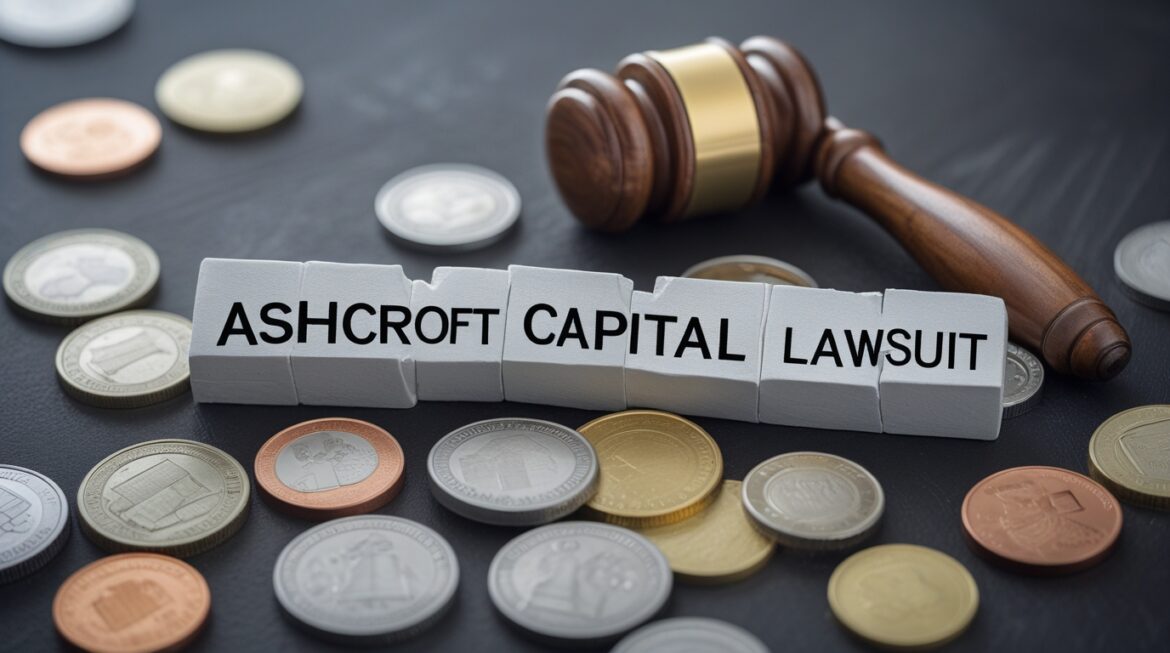
Introduction
The Ashcroft Capital lawsuit has captured the attention of real estate investors across the nation, highlighting vulnerabilities in the syndication model that many rely on for passive income.
Founded on principles of value-add multifamily investments, Ashcroft Capital once symbolized steady growth in a competitive market, but recent legal challenges have raised questions about transparency and trust.
This case, filed in early 2025, stems from investor frustrations over promised returns that faltered amid economic pressures and operational decisions.
As a firm managing billions in assets, Ashcroft’s story underscores the delicate balance between ambition and accountability in private equity.
Drawing from years of observing real estate disputes, this article breaks down the lawsuit’s core elements, offering clarity for those navigating similar uncertainties.
Whether you’re an affected investor or simply tracking industry shifts, understanding this matter equips you with essential insights.
Background on Ashcroft Capital
Ashcroft Capital emerged in 2015 as a beacon for passive investors seeking exposure to multifamily properties without the hassles of direct management.
Co-founded by industry veterans Frank Roessler and Joe Fairless, the firm quickly scaled by acquiring undervalued apartment communities ripe for renovations and value enhancement.
With over $2 billion in assets under management and more than 10,000 units across key U.S. markets, Ashcroft built a reputation for delivering risk-adjusted returns through strategic repositioning.
Investors appreciated the firm’s emphasis on capital preservation alongside cash flow generation, often highlighted in detailed monthly reports and webinars.
Yet, as the real estate landscape evolved with rising interest rates and market volatility, whispers of strain began to surface in investor forums.
These early signals foreshadowed the deeper issues that would culminate in the Ashcroft Capital lawsuit, exposing cracks in the firm’s operational facade.
The company’s model relied on syndications where limited partners contributed capital for equity stakes, expecting steady distributions from rental income.
This structure, while efficient, amplified risks when unforeseen costs or delays disrupted projections, setting the stage for legal discontent.
The Spark of the Ashcroft Capital Lawsuit
The Ashcroft Capital lawsuit ignited on February 12, 2025, when a group of investors, led by plaintiff Anthony Cautero, filed Cautero v. Ashcroft Legacy Funds, LLC, et al. in the U.S. District Court of New Jersey.
Targeting Ashcroft Legacy Funds and affiliated entities, the complaint painted a picture of systemic lapses that eroded investor confidence over several years.
What began as isolated complaints about delayed payouts evolved into a collective action, amplified by shared experiences on platforms like Reddit and private investor groups.
Plaintiffs argued that the firm’s promotional materials glossed over potential pitfalls, luring participants with visions of outsized gains.
At its core, this legal battle reflects broader tensions in real estate syndications, where economic headwinds test the resilience of partnerships formed in boom times.
For Ashcroft, the suit marked a turning point, forcing a public reckoning with practices once shielded by the opacity of private deals.
The filing came at a moment of heightened scrutiny for the sector, following a wave of similar disputes tied to post-pandemic market corrections.
Investors, many of whom entered during low-rate eras, found themselves grappling with realities that clashed sharply with initial assurances.
Key Allegations in the Ashcroft Capital Lawsuit
Central to the Ashcroft Capital lawsuit are claims of financial misrepresentation, where projections of annual returns exceeding 15% reportedly failed to materialize amid rising expenses.
Plaintiffs contend that offering documents downplayed vulnerabilities like interest rate hikes, leaving participants blindsided by performance shortfalls.
Breach of fiduciary duty forms another pillar, with accusations that Ashcroft prioritized sponsor fees and rapid asset flips over long-term investor benefits.
For instance, decisions to refinance properties at higher costs allegedly funneled funds away from distributions, benefiting management at the expense of limited partners.
Lack of transparency emerges as a recurring theme, highlighted by delays in financial reporting and vague updates on capital calls.
One notable grievance involves a 19.7% additional investment request issued without adequate forewarning, straining already cautious backers.
Unauthorized fund usage adds fuel to the fire, as plaintiffs allege reallocations for unapproved renovations or operational overheads deviated from syndication agreements.
These moves, while perhaps defensible in isolation, collectively painted a narrative of unchecked discretion eroding trust.
The allegations extend to deceptive sales practices, where former employees’ testimonies suggest scripted pitches omitted critical risk disclosures.
Such practices, if proven, could invite SEC involvement, amplifying the stakes beyond mere civil claims.
Timeline of the Ashcroft Capital Lawsuit
The roots of the Ashcroft Capital lawsuit trace back to 2022, when initial distribution pauses rippled through investor networks amid climbing inflation.
By mid-2023, forum posts on Wall Street Oasis flagged concerns over principal recovery, hinting at brewing unrest.
Momentum built in late 2024 as economic pressures mounted, with refinancing challenges exposing overleveraged positions in Ashcroft’s portfolio.
Investor outreach intensified, but responses often fell short, sowing seeds of formal action.
The official filing on February 12, 2025, crystallized these tensions, drawing immediate media coverage and legal filings from additional plaintiffs.
Discovery phases kicked off swiftly, unearthing emails and memos that bolstered the misrepresentation narrative.
By April 2025, settlement talks surfaced, though Ashcroft’s denial of wrongdoing prolonged negotiations into summer.
Court updates in July revealed third-party audits ordered to verify financial claims, a procedural win for transparency advocates.
As of September 2025, the case remains active, with mediation sessions scheduled amid calls for class certification to broaden plaintiff ranks.
This drawn-out timeline mirrors many real estate disputes, where resolution hinges on balancing legal costs against reputational damage.
Impact on Investors from the Ashcroft Capital Lawsuit
For investors entangled in the Ashcroft Capital lawsuit, the emotional toll rivals the financial one, blending betrayal with uncertainty over retirement nest eggs.
Many entered as passive participants, only to face capital calls that demanded active decisions in a volatile economy.
Distributions, once a hallmark of reliability, halted or dwindled, prompting portfolio reallocations and heightened anxiety in online communities.
Those holding Class A shares, promised preferred returns, voiced particular outrage over diluted protections during asset sales.
The lawsuit’s ripple effects extend to liquidity crunches, as frozen funds limit diversification opportunities elsewhere.
Smaller investors, often retirees, bear disproportionate burdens, underscoring inequities in syndication access.
Beyond immediate losses, the case erodes faith in operator vetting, with many reevaluating due diligence for future deals.
Positive note: Collective action has empowered voices, fostering networks for shared advocacy and knowledge exchange.
Long-term, affected parties may see partial recoveries through settlements, but scars on investment philosophies linger.
This episode serves as a stark reminder of the human element in high-stakes real estate ventures.
Legal Proceedings and Potential Outcomes
Navigating the Ashcroft Capital lawsuit involves intricate federal procedures, starting with motions to dismiss that Ashcroft filed in March 2025.
The court rejected these outright, citing sufficient evidence of plausible claims, paving the way for deeper discovery.
Plaintiff attorneys have leveraged depositions and document dumps to construct a timeline of alleged lapses, from syndication launches to payout delays.
Ashcroft counters with defenses rooted in Private Placement Memorandums, arguing investors assumed informed risks per SEC norms.
Settlement remains the likeliest path, potentially involving multimillion-dollar payouts without liability admissions, structured over installment plans.
A trial verdict could impose steeper penalties, including disgorgement of fees or mandated governance reforms.
Dismissal chances slim as the case advances, but appeals loom if unfavorable rulings emerge.
Industry watchers predict this could catalyze voluntary disclosures, preempting future Ashcroft Capital lawsuit iterations.
Regardless of resolution, the proceedings illuminate gaps in regulatory oversight for private funds, urging reforms in disclosure standards.
For legal teams, it’s a high-wire act balancing aggressive tactics with the firm’s ongoing viability.
Broader Implications for Real Estate Investments
The Ashcroft Capital lawsuit reverberates through the multifamily sector, prompting sponsors to audit communication protocols amid rising litigation fears.
Regulators like the SEC may tighten guidelines on risk disclosures, curbing aggressive marketing in syndication pitches.
Investor caution has surged, with surveys showing 30% hesitation toward passive deals post-2025 headlines.
This shift favors established operators with proven track records, squeezing newcomers in a consolidating market.
On the flip side, the case accelerates innovation in transparency tools, from blockchain-tracked distributions to AI-driven risk modeling.
Value-add strategies face reevaluation, as short-term flips yield to sustainable holds resilient against rate fluctuations.
Economically, it highlights syndication’s sensitivity to macro forces, blending opportunity with amplified downside exposure.
Ultimately, this lawsuit could fortify the industry, weeding out weak players while rewarding ethical stewards of capital.
Stakeholders beyond real estate, including financial advisors, now stress diversified syndication exposure to mitigate single-firm risks.
The narrative evolves from scandal to catalyst, potentially birthing a more mature, investor-centric ecosystem.
What Investors Should Do Amid the Ashcroft Capital Lawsuit
Affected by the Ashcroft Capital lawsuit? Start by gathering all correspondence, from PPMs to update emails, for a comprehensive review.
Engage a securities attorney specializing in real estate to gauge claim viability and opt-in deadlines for class actions.
Monitor court dockets via public access portals, filtering for updates on mediation or evidence filings that signal progress.
Join vetted investor groups for peer support, but verify advice against professional counsel to avoid misinformation pitfalls.
Diversify proactively: Shift toward index funds or direct ownership in stable markets to buffer against syndication volatility.
Track personal returns against benchmarks, documenting discrepancies that could strengthen individual claims if needed.
Financial planning takes precedence—consult advisors on tax implications of potential settlements or capital call refusals.
Cultivate resilience by viewing this as a learning curve, honing skills in operator evaluation for wiser future entries.
Stay grounded: While frustrations mount, methodical steps preserve options and mental bandwidth for holistic wealth building.
Empowerment lies in action, transforming lawsuit limbo into a pivot toward savvier investment stewardship.
The Future Outlook for Ashcroft Capital Post-Lawsuit
Post-resolution, Ashcroft Capital could rebound through rebranded transparency initiatives, like quarterly third-party verifications.
Leadership might pivot to conservative acquisitions, favoring de-risked assets in secondary markets over aggressive expansions.
Investor relations overhaul seems inevitable, with enhanced portals for real-time portfolio insights and grievance channels.
If settlements strain liquidity, strategic partnerships or asset sales could refuel operations without diluting core holdings.
Optimistically, the firm leverages its $2 billion foundation to innovate, perhaps launching education-focused syndications.
Pessimistically, prolonged litigation erodes talent and capital, ceding ground to nimbler competitors in multifamily.
Industry-wide, this Ashcroft Capital lawsuit precedent may standardize fiduciary benchmarks, elevating baseline trust.
For observers, it’s a chapter in real estate’s maturation, where accountability unlocks sustainable prosperity for all.
As markets stabilize, Ashcroft’s trajectory hinges on authentic reform, proving resilience beyond legal headlines.
Investors watch closely, betting on evolution over extinction in this dynamic arena of opportunity and oversight.
In wrapping this exploration of the Ashcroft Capital lawsuit, one truth stands clear: Knowledge arms participants against unseen currents.
By dissecting allegations and strategies here, readers gain tools to safeguard stakes in tomorrow’s deals.
The saga continues, but informed vigilance turns potential pitfalls into platforms for enduring success.
Real estate’s allure persists, tempered now by lessons etched in cases like this one.


